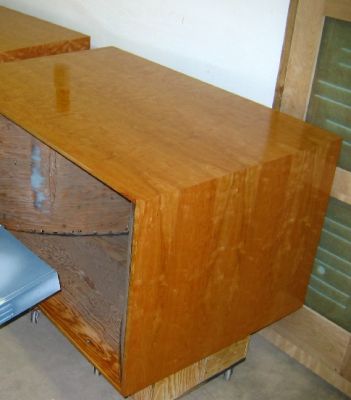Question
I have a cherry entertainment center job, and I would like the ability to spray clear pre-cat lacquer and dye toning using a gravity HVLP gun. I have been spraying WB finishes with my currrent HVLP but I'm leery about WB on cherry. And I don't want to use my conventional gun due to overspray. I have a 60 gallon IR 2 stage compressor that outputs >15.1 cfm at 175 psi at my shop. I would like your recommendations on a gun model and tip size.
Note: I currently have a Binks Mach M1-G Prime HVLP gun that is designed for shooting automotive primers and waterborne woodworking finishes. The gun has a 1.7 needle (no smaller available). I'm under the impression that this gun has too big a tip for pre cat lac.
Forum Responses
(Finishing Forum)
From contributor L:
I run an HVLP gravity cup automotive gun also. It has a 1.5 tip in it and I want the 1.7. I would say that you are fine for shooting the pre-cat - you won't even need to thin it. As for shooting the dyes and toners, just use the needle adjustment to close down the movement so the needle orifice stays small while shooting.
But it's easy to work around this limitation. Instead of getting a new spray gun and using lacquer, you can either seal the wood with shellac or an oil-base product. Shellac does a nice job of popping the grain and figure in cherry and, depending on the type of flakes you use, adds some color as well, which also enhances the wood. Oil-based products, on the other hand, do a great job of enhancing the directionality (aka chatoyance, shimmer) in the wood and bringing out its color. Boiled linseed oil is often recommended, but its slow dry/cure time is a real deterrent in a production environment. Instead of the linseed oil, I use an oil-base varnish; it's dry in a day. I use Waterlox original sealer and finish because it has a deep amber coloring that really pops the figure.
Here are the steps I use:
Sand per usual and remove the dust.
I'm working on some large horn speakers for a customer and he loves the look of the oiled cherry with topcoats. I just completed a bunch of cherry display cases for him using the same finish.
